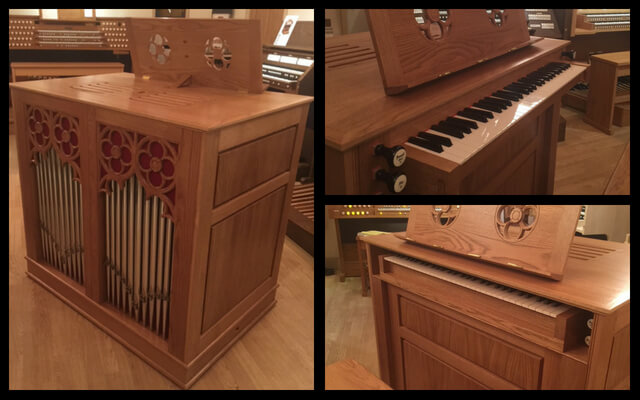The latest addition to our Regent Classic instruments is a digital chamber organ, a smaller version of our bespoke church organs offering a lightweight, adaptable solution to your musical requirements. The compact nature make this instrument ideal for use in continuo roles alongside other musicians, or as a complement to a main organ in a cathedral or larger church. Visit the chamber organ page for more information.
There is an inevitable tendency in the world of pipe organs to be dazzled by size. The larger the instrument or the bigger the case the more an instrument tends to be publicised and revered. The same of course is true of digital instruments where doubling the stop list does not usually double the price (and certainly does not double the space required) so the temptation to build digital instruments of huge size is even more tempting.
At the end of this blog post you will find a video demonstrating the features and functionality of the chamber organ. You can jump straight to this video here or read on to find out more about how we constructed the chamber organ.
The idea of creating a digital chamber organ
The idea to make this beautiful and small instrument was suggested by a customer and it immediately appealed to me as a far better way of demonstrating the extraordinary attention to detail that we love to include in our instruments. Also, it is actually far harder to make a small digital instrument sound really good, so there could be no tougher challenge than to make a digital version of a small chamber organ where the player is so intimately listening to pipes just inches away from him or her. This is a true test of the credibility of ‘digital pipes’.

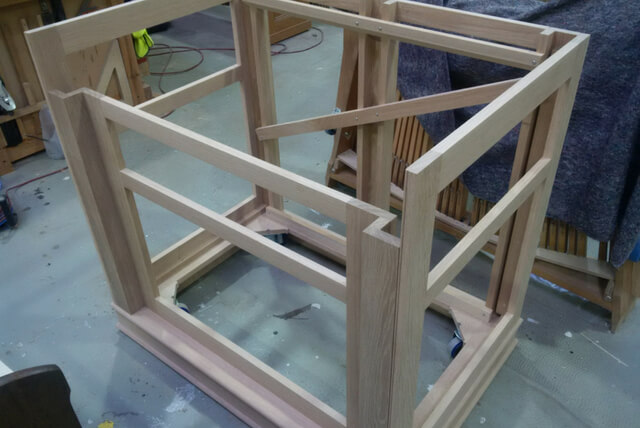
Much fun was had looking at countless pictures of real box and chamber organs made by some of the greatest pipe organ builders. We looked at period instruments to designs of quite contemporary feel. When it came to settle on a design we erred on traditional. My personal taste is admittedly conservative and one needs also to recognise the effect appearance has on perception of sound quality.
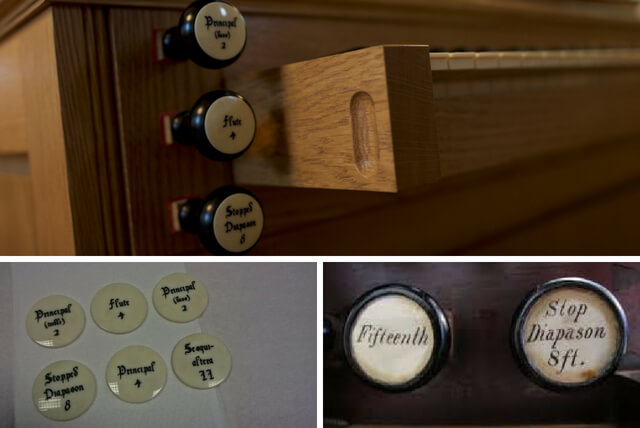
There is a considerable amount of psychology at work as the brain processes sound and if the messages from the eye are reinforcing that process the impression of quality will be improved. There is a lot of research on this topic, you need not take my word for it.
Selection and design of speaker enclosure
Another very important factor was the design of the speaker enclosures and the selection of the speaker drivers to use with it. For this we sought help from a specialist acoustic engineer who also happens to be an organist so we did not have to explain the intimacy of sound we were looking to replicate.
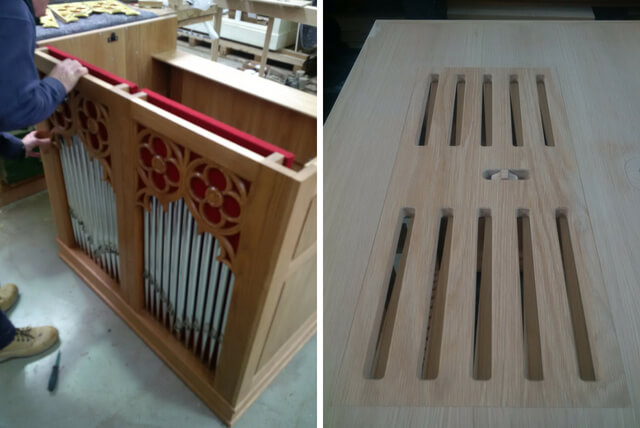
Space dictated that we limit the audio to 10 speakers that respond to a 6 channel audio feed. Speakers were set into sealed acoustic chambers and set at 2 different planes. The sound is also controlled and diffused through a manually operated swell shutter set into the top of the console.
As with all our instruments we strive to ensure that nothing visually immediately confirms it is a digital instrument. So all voicing management is well out of sight. Other than the drawstops there is not a single ‘switch’ in sight. Even the power on/off is managed by a hidden micro switch. The power comes on when the keyboard, which recesses back into the cabinet is pulled forward to allow the instrument to be played.
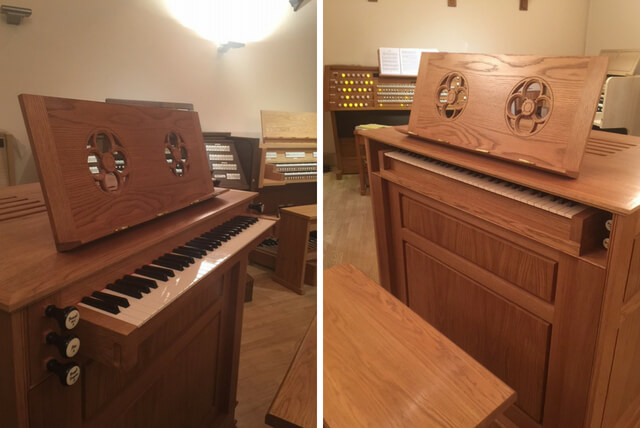
The organ keyboard and console design
The keyboard is made by P&S using full length wooden tracker sticks to give it an exquisite feel. Above this sits a retractable and adjustable music desk. The draw stops are on square wooden shanks finished with black-wood stop heads which include imitation ivory name discs that use a period style font.
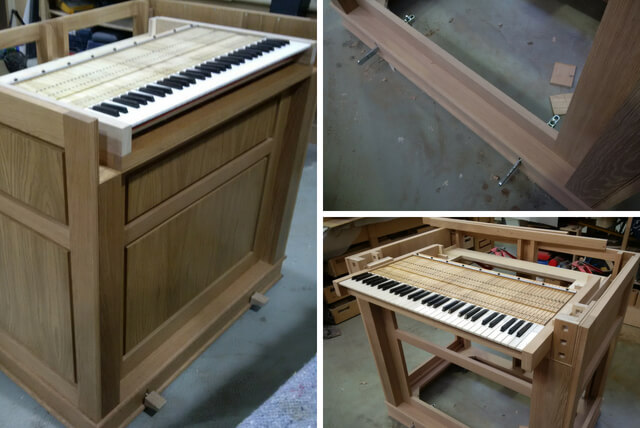
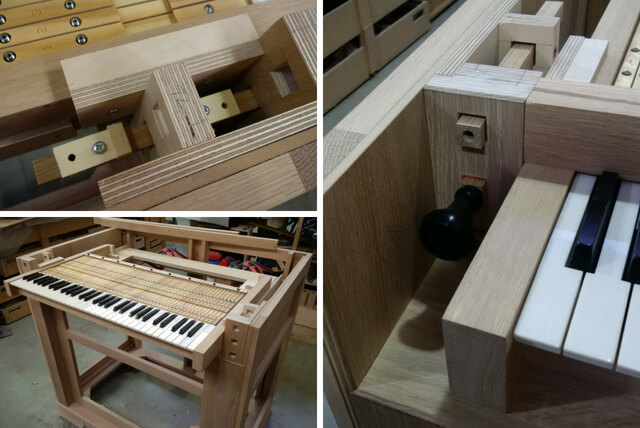
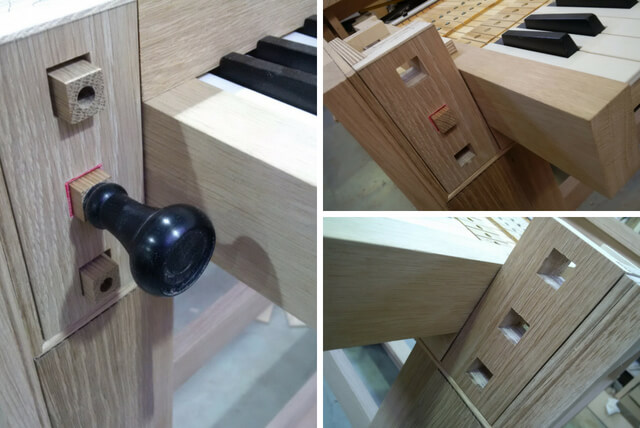
Beautifully carved pipe shades finish off the rear of the instrument which is set on castors that can be locked to ensure it does not move once set up for use. The stool made of matching oak has delightful hand carved pierced design the echo’s the detail of the pipe shades. The only concession to its electronic origin is a discrete power port low down on the cabinet side.
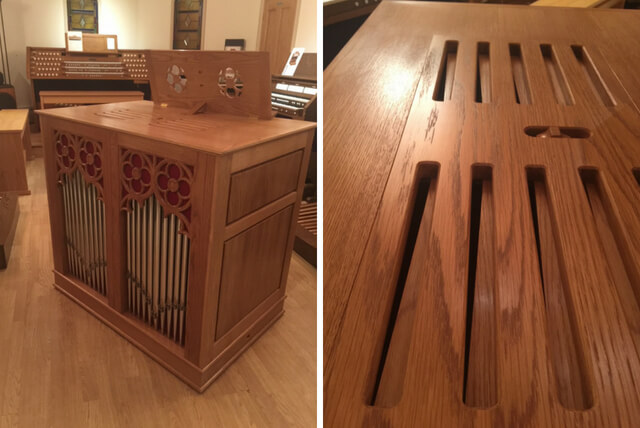
So I hope you will agree the instrument certainly looks the part but more important what does it sound like. There are of course recordings for you to listen to and help you decide for yourself. We have also produced a video so you can see in far more detail the features described above.
Invitation to try the chamber organ
None of this can of course substitute playing it in the flesh which we invite you to request or you may wish to hire it for performance use. Like all digital instruments it can easily be set to play in a number of tuning temperaments and at concert or baroque pitch. And of course, it does not require time consuming tuning. It is ready to play as soon as it is delivered.
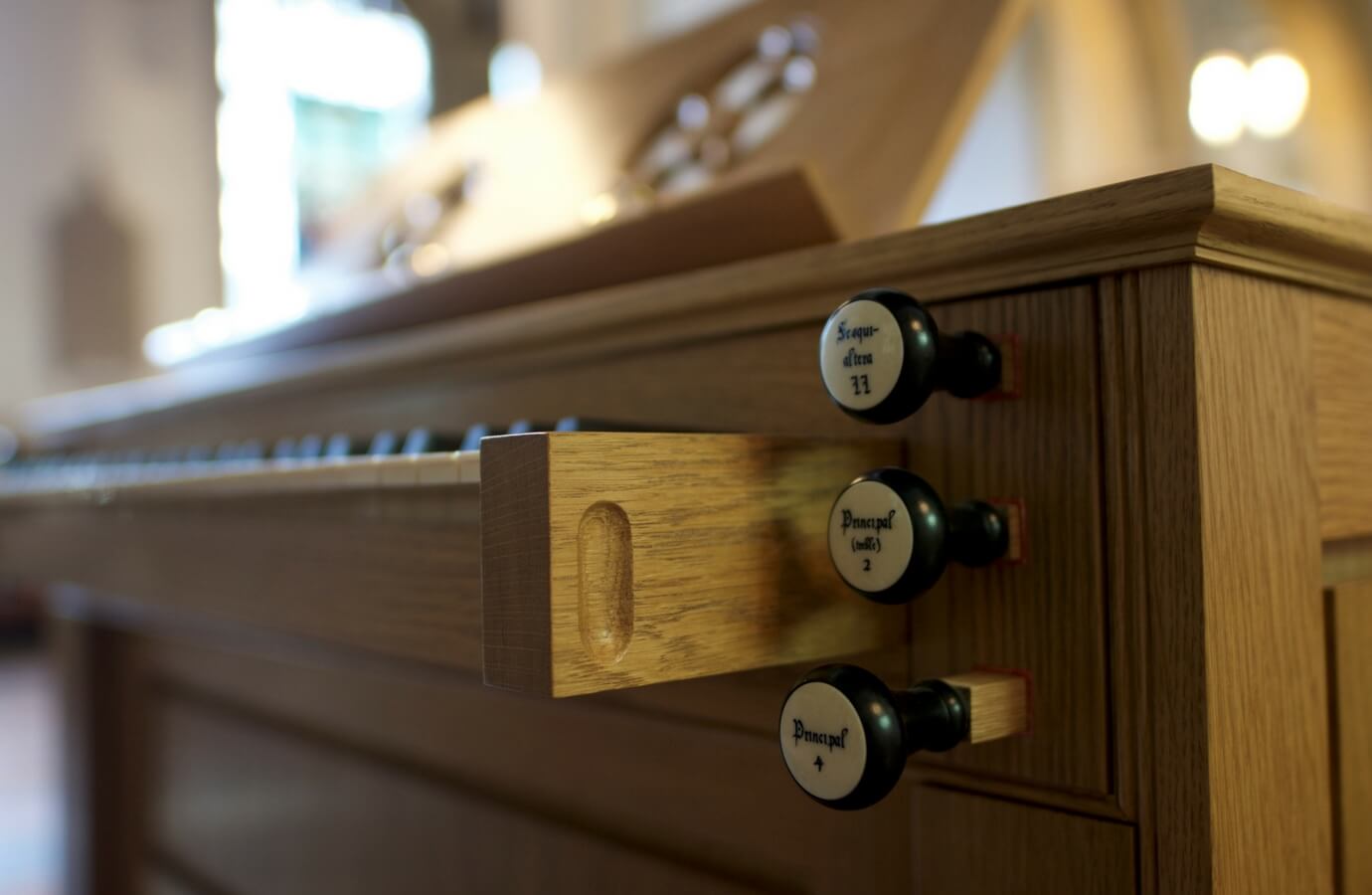
As you may know our sound engine is based on a computer software model of an organ pipe. The computer then carries out a calculation that generates the sound. This calculation of course changes with the type of stop and note requested but it also changes depending upon how fast the key is depressed and how many notes and stops are being asked to play at once. It is a true real time calculation that changes depending upon the many inputs the musician creates.
For this instrument we had to create new voice models and the pipes of this organ are of a far smaller scale than those used in all our other instruments which are all ‘full sized and scaled’ instruments. The voice modelling software allows us to change the speech of every individual pipe which is extremely helpful when building an organ of this small size.
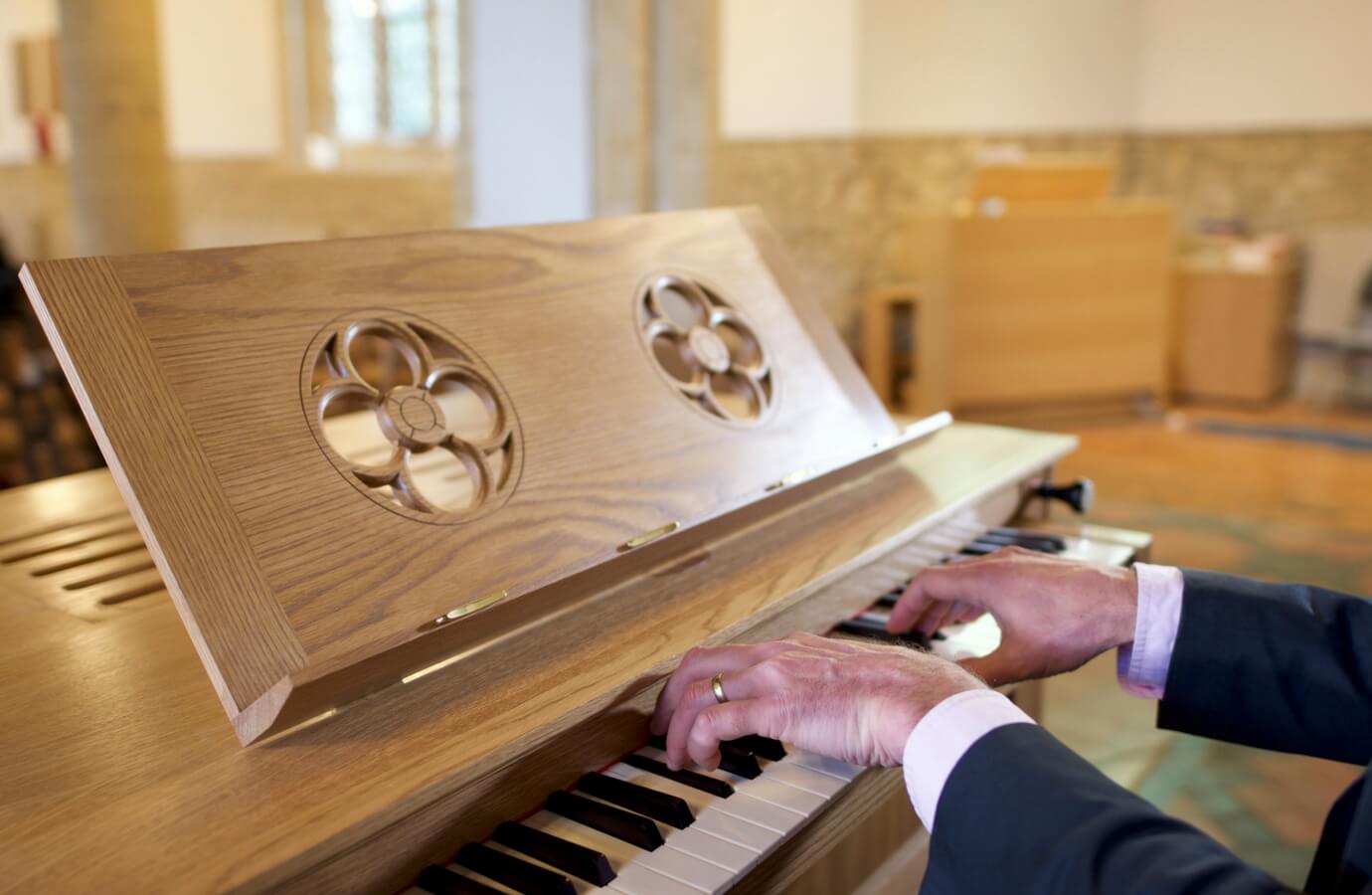
We are delighted and astonished with the result which we can only partly convey to you in the recording. But can I draw your attention to the video (below) at 2.55 onwards where Francis demonstrates the instruments tonal response to changes in keystroke speed.
This has been far more about an exercise of demonstrating what can be done with superb audio design and technology than a commercially based project. But if you would like to ask for a quote for a similar instrument for your own or chamber concert use we would of course be delighted to be commissioned to make another one.
A video introducing our chamber organ
The video below is a longer version (just over 7 min) compared to the video on the chamber organ page and goes into a bit more detail on some of the features.
I have had a passion for church organs since the tender age of 12. I own and run Regent Classic Organs with a close attention to the detail that musicians appreciate; and a clear understanding of the benefits of digital technology and keeping to the traditional and emotional elements of organ playing.
